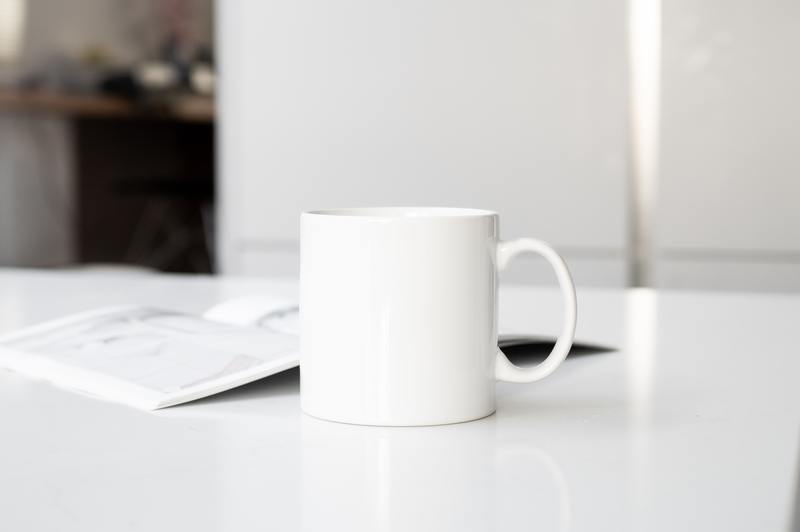How to get rid of mold in coffee mug? Well, we all know that travelers, commuters, trekkers, tea lovers, and coffee enthusiasts who are always on the go will appreciate and love the convenience of travel mugs.
Yet, although these reusable mugs are tough, they aren’t indestructible. Even with frequent rinsing and washing, these mugs can create a breeding ground for molds that can put you at risk.

You can also check out these helpful mold cleaning tips on how to remove mold from breast pump tubing.
Eliminating The Mold In Your Mug
We may find mold almost anywhere, but many people have discovered the ugly side of traveling coffee mugs. These mugs are made to keep hot drinks hot and cold drinks cold, trapping moisture in the lid and boosting mold growth.
You probably have travel mugs if you frequently drink coffee or tea. In any scenario, you’d be using a travel mug regardless of your beverage of choice.
Let’s say you’re consuming more than simply your morning tea or coffee. To help you with mold prevention tips, here an article on how to prevent mold after a leak.
What causes mold to grow in your mug?
Travel mugs are a terrific investment, but they can develop mold if not properly cleaned. The lids on these travel cups trap moisture, which leads to mold growth.
A mold formed in humidity is a kind of fungus that thrives in damp, dark conditions.
Mold can be green or black, and it comes from a variety of fungal species. Your mug may be dirty as a result of your attempts to clean it.
The majority of travel mugs are not dishwasher safe. Water can infiltrate between the inner and outer insulation layers if you put your cup in the dishwasher to clean it.
Mold can grow if water becomes trapped. In addition, the rubber ring that acts as a seal on some lids can retain moisture and cause mold to grow.
Best Way To Clean Your Coffee Mugs
Step #1. Dismantle it
Take apart the lid, removing the rubber section of the cover and anything else that comes out. Everything is included in this.
Step #2. Begin by washing it
You start by hand-washing everything in hot water with soap. The best way to ensure that all bacteria are removed is to immerse everything for 5 minutes in hot water with soap.
Dish soap and hot water are both necessary for achieving the best possible cleaning results.
Step #3. Examine every nook and cranny
Get inside every part of the machine, even the ones that are difficult to access. We suggest using a little bristle brush that can get into tight spaces.
Scrub carefully for a minute or so, being careful not to destroy the mug in the process.
Step #4. It’s time to dry out
Finally, make sure everything is dry. Place everything upside down in a drying rack or a kitchen towel to dry everything overnight.
Mold will not grow on a dry cup, so make sure you maintain it that way.
Methods In Deep Cleaning Your Mugs
There are a few quick, simple and convenient ways to thoroughly clean your travel mug without using the dishwasher:
Using soap
Wipe your mug and lid down with warm, soapy water using a clean sponge. Rinse the cup under running water as soon as possible.
Use a paper towel or a microfiber cloth to dry.
Using vinegar
Fill your mug halfway with warm water and a tablespoon of distilled white vinegar. Allow 15 minutes for the solution to sit before rinsing it out.
You can also soak the lid in vinegar and water to clean it.
Using baking soda
Baking soda is indeed a versatile ingredient that can be used in a variety of situations. Scrub extra-sticky, hard-to-reach places with a paste made from baking soda and water and a clean toothbrush.
How much of an impact can my moldy mug have on me?
Very few sips of mold aren’t harmful because our stomach acid quickly kills the mold. You’re unlikely to catch an infection if you only do it once or twice.
Mold can induce cramps, an upset GI, nausea, and diarrhea, so be sure it’s not more than that. It has a variety of effects on people, and it often goes unnoticed.
Mold exposure causes symptoms similar to a cold, so it’s impossible to tell which is which. Mold exposure has a few signs: wheezing, coughing, nose tightness, sore/itchy throat, and skin rash.
It will not adversely harm you if you have a robust immune system, but people who do not have a strong immune system are at an enormous risk of infection. It’s therefore preferable to be safe than sorry.
If you’ve been sick and have been drinking from a moldy cup, you should go to the doctor right away. Mold poisoning could be a problem for you.
Conclusion
Many foods, including coffee beans, contain mycotoxins. They are, nevertheless, plentiful.
In many ways, the advantages of coffee exceed the disadvantages. Always clean all of the nooks and crevices of your coffee travel mugs, as you never know what’s lurking beneath those lids.
We answered questions regarding “how to get rid of mold in coffee mug,” explored several ways for preventing and cleaning mold from your cups, and explained the risks of inadvertently consuming mold in this article.
